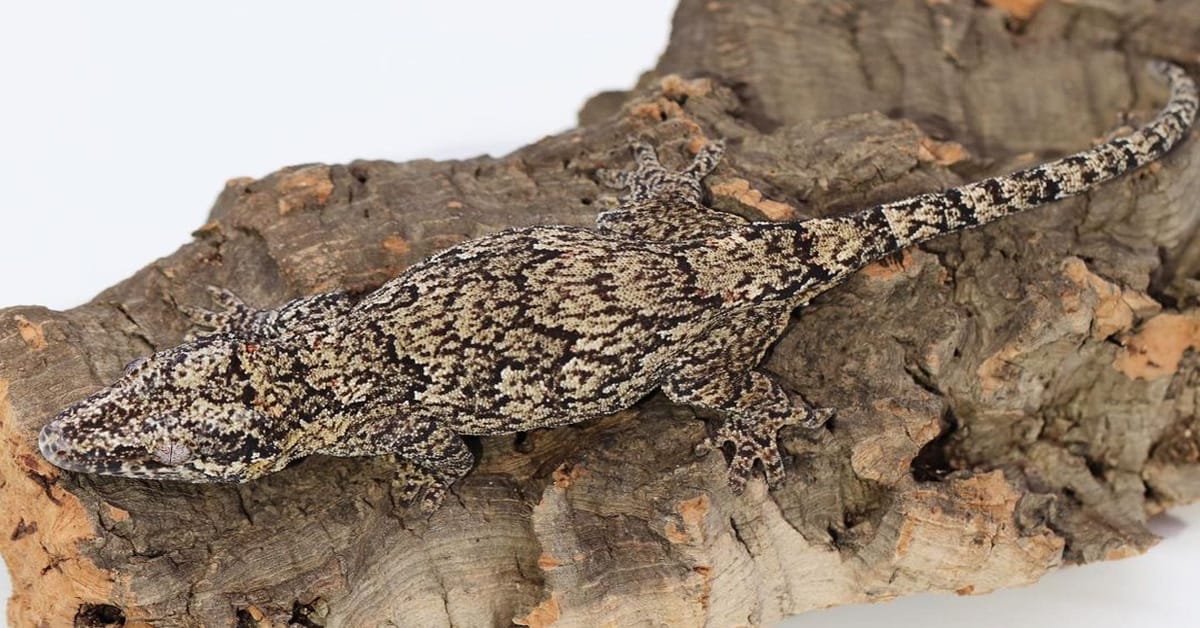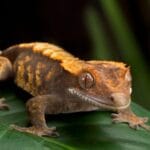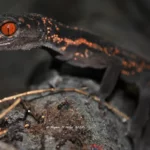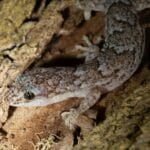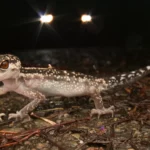Get ready to dive into the amazing world of geckos in Florida! With its diverse habitats, Florida is home to a whopping 17 gecko species. Some are native to the state, while others have made their way from different corners of the globe. From the tiny reef gecko clinging to rocks by the ocean to the common house gecko sharing our walls, each gecko boasts unique tricks and habits. Join us as we explore these captivating creatures, uncovering their ecological roles, adaptations, and the challenges they face in the Sunshine State.
Types of Geckos in Florida: A Kaleidoscope of Lizards
Florida’s reputation as a reptile haven is well-deserved, and geckos are some of the most intriguing characters you’ll encounter! These little lizards are ubiquitous throughout the Sunshine State, showcasing a stunning array of shapes, sizes, and colors.
Imagine the reef gecko, a miniature marvel barely exceeding two inches in length, patrolling the coast with surprising speed. On the other end of the spectrum, the white-spotted wall gecko, reaching a length of six inches, reigns as one of Florida’s gecko giants. Their color palette is equally diverse, ranging from earthy browns and grays to vibrant olive-browns and tans. Some, like the ocellated gecko, even sport eye-catching patterns resembling intricate artwork.
But geckos are more than just their looks. Their personalities are as varied as their appearances. The Mediterranean house gecko, for instance, is a true urbanite, perfectly content to share our homes and gardens. The flat-tailed house gecko, on the other hand, prefers the tranquil life amidst the trees. When it comes to their activity patterns, it’s a mixed bag. Some are creatures of the night, while others greet the day with the rising sun.
Let’s meet some of Florida’s gecko residents:
| Gecko Type | Native/Invasive | Description |
|---|---|---|
| Reef Gecko | Native | Tiny, ground-dwelling, coastal enthusiast |
| Tropical House Gecko | Native | Equally at home indoors & outdoors |
| Flat-Tailed House Gecko | Native | Arboreal acrobat with a distinctive tail |
| Mediterranean House Gecko | Invasive | European transplant, city-dwelling |
| Common House Gecko | Invasive | Southeast Asian native, urban adapter |
Keep your eyes peeled for these fascinating creatures on your next Florida adventure!
What are the Native Geckos of Florida? One Gecko Stands Alone
While Florida boasts a diverse gecko population, only one can truly claim native status: the Reef Gecko. This little Floridian stands apart from the eight invasive gecko species that now call the state home.
The Reef Gecko, with its cryptic brown skin and dark spots, is a master of camouflage. You’ll only find this shy reptile in a very specific region: the southern tip of Florida, where a unique ecosystem caters to its needs.
However, don’t underestimate the other gecko residents. Species like the Ocellated and Flat-tailed Geckos, despite their invasive status, have become well-established and even outnumber the native Reef Gecko. These newcomers have adapted remarkably well to Florida’s climate and environment.
Here’s a fascinating fact: despite their varied origins, all geckos in Florida share a common culinary passion—insects! All are non-venomous, relying on insects as their primary food source. Think of them as tiny, silent guardians, patrolling gardens for a tasty six-legged treat. However, invasive geckos can pose challenges. They compete with native species for food and habitat, potentially upsetting the delicate balance of the local ecosystem.
Let’s recap:
- Nine gecko species call Florida home, but only the Reef Gecko is a true native. The remaining eight are considered invasive.
- The Reef Gecko is a southern specialist, found exclusively in the southernmost parts of Florida.
- Invasive geckos are thriving, unfortunately. They often outnumber the native Reef Gecko and can disrupt the natural harmony of the ecosystem.
- All geckos in Florida are harmless to humans and are incredibly effective at keeping insect populations in check. They might be small, but their ecological role is significant!
Invasive Gecko Species in Florida: Identifying the Differences
Now that we’ve met some of Florida’s gecko residents, let’s learn how to distinguish the natives from the newcomers. It’s like a reptile game of “Spot the Difference,” but instead of subtle changes in a drawing, we’re looking for clues in scales and toe pads!
The Mediterranean house gecko takes center stage as a prime example of an invasive species. These geckos are the ultimate party crashers of the reptile world, arriving uninvited, multiplying rapidly, and consuming resources meant for native species.
So, how can you tell if you’ve encountered a true Floridian gecko or an invasive guest? Here’s the inside scoop:
Size Matters: Geckos in Florida come in a variety of sizes. The tiny 2-inch reef gecko shares the stage with the impressive 12-inch tokay gecko. Invasive species like the Mediterranean house gecko tend to fall somewhere in between these extremes.
Color Me Gecko: Native geckos often sport camouflage as their fashion choice, with earthy browns and grays allowing them to blend seamlessly with their surroundings. Invasive species, on the other hand, often flaunt brighter colors and more conspicuous patterns, standing out from the crowd.
Check Those Toes: One of the most fascinating gecko adaptations is their ability to climb almost any surface, seemingly defying gravity. This superpower comes from specialized toe pads covered in microscopic hairs called setae, which create a powerful grip. Invasive species typically have larger, more prominent toe pads than their native counterparts.
By familiarizing yourself with these identification tips, you can contribute to scientific efforts to track invasive gecko populations and protect Florida’s incredible native gecko diversity.
Adapting to Thrive: Exploring the Unique Traits of Florida’s Geckos
Let’s delve deeper into the remarkable adaptations that allow these lizards to thrive in the Sunshine State. From camouflage to nocturnal habits, geckos have evolved a suite of traits that make them masters of their environment.
Masters of Disguise: Many of Florida’s geckos are masters of camouflage, blending seamlessly with their surroundings. The Mediterranean House Gecko, for example, sports a mottled coat of browns and grays, mimicking the texture of tree bark. The Florida Reef Gecko, with its cryptic coloration, disappears against the rocky coastline.
Sticky Situation, No Problem: Geckos are renowned for their climbing prowess, scaling walls, ceilings, and even glass with ease. This remarkable ability stems from their specialized toe pads, covered in millions of tiny hairs that create a powerful grip through a combination of forces, including van der Waals forces.
Night Owls of the Reptile World: While many of us are sound asleep, numerous gecko species in Florida are just getting started. Their nocturnal lifestyle allows them to avoid daytime predators and reduces competition for food. The Tokay Gecko, known for its distinctive calls that echo through the night, and the stealthy Leopard Gecko, hunting for insects under the cover of darkness, exemplify Florida’s nocturnal gecko contingent.
Picky Eaters and Adaptable Diners: Geckos, like us, have their culinary preferences. The Mediterranean House Gecko is an opportunistic feeder, consuming insects, small animals, and even the occasional piece of fruit. The Reef Gecko, in contrast, is a specialist, primarily dining on tiny insects found along the coast. This dietary specialization helps to reduce competition between species, allowing them to share resources and thrive.
Beyond these adaptations, Florida’s geckos also exhibit intriguing behaviors and ecological roles:
- Marbled geckos, for example, play a vital role in their environment. Discover the remarkable ways how marbled geckos contribute to their environment.
- Understanding the dietary needs of young geckos is essential for their survival. Unleash the secrets of what baby geckos consume for sustenance.
By understanding the adaptations and behaviors of Florida’s geckos, we gain a deeper appreciation for these fascinating creatures and the delicate balance of the ecosystems they inhabit.
- Mastering Leader in Spanish: The Complete Guide - April 19, 2025
- Uncovering Surprising Parallels: England Size Compared to US States - April 19, 2025
- Old Mexico Map: Border Shifts 1821-1857 - April 19, 2025
